"Hidden Dust and Smoke" burst out, and the Northwest city behind it is worthy of attention!
Author:Authentic style Time:2022.09.10


Wind monarch:
On September 7th, two months after the release, the movie "Hidden Dust Smoke" achieved a counterattack of 100 million box office. It was never been optimistic about niche art films to explosion. Intersection
The film tells the daily life of a couple cultivated on the northwestern rural land. The portrayal of the underlying life in the film is very infectious, which has made countless audiences move. What Wind Jun wants to say is the stage of the film, Zhangye City, Gansu Province, and the hometown of director Li Ruiyi, which is also the source of the word "Gan" in Gansu's name.
Zhangye, Gansu, also known as Gansu. You may not know this place, but without Gansu, Gansu is not Gansu, no Zhangye, and there is no millennium prosperity on the Silk Road.
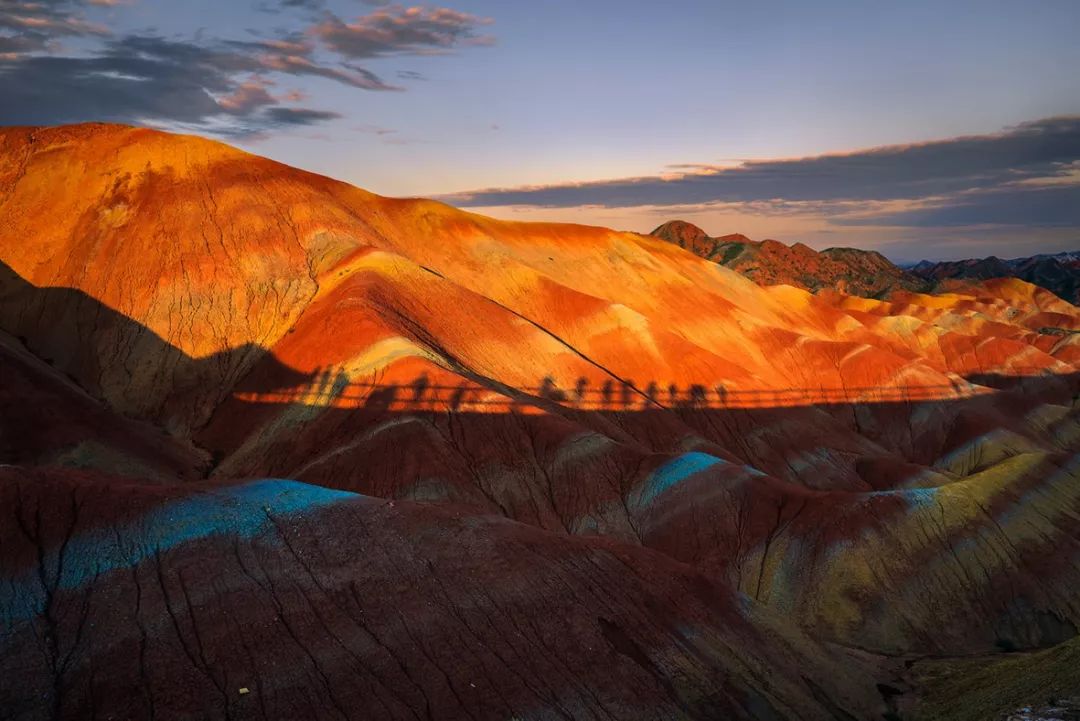
Danxia under the setting sun set off a figure like a canvas.
Photo/Visual China
Few cities are like Zhangye in Gansu. As soon as they are born, they shoulders the rising and disgrace of the rise and fall of a country. We pulled the time back to the Han Dynasty more than 2,000 years ago, and the gaze of the country was cast in the area of Hexi. If there is no stable Hexi, it may be difficult to have far -reaching Silk Road.
Without Zhangye, there was no more than two thousand years of arms in China.

Zhangye not only has Danxia
Zhangye's most well -known is Danxia landform.
The formation of Zhangye Danxia is closely related to the movement of the Himalayas. Various minerals have accumulated, and they are squeezed up. After thousands of years of wind and rain, it eventually forms the colorful Danxia landforms today. This is also one of the "China's most beautiful Danxia landforms" selected by many media.
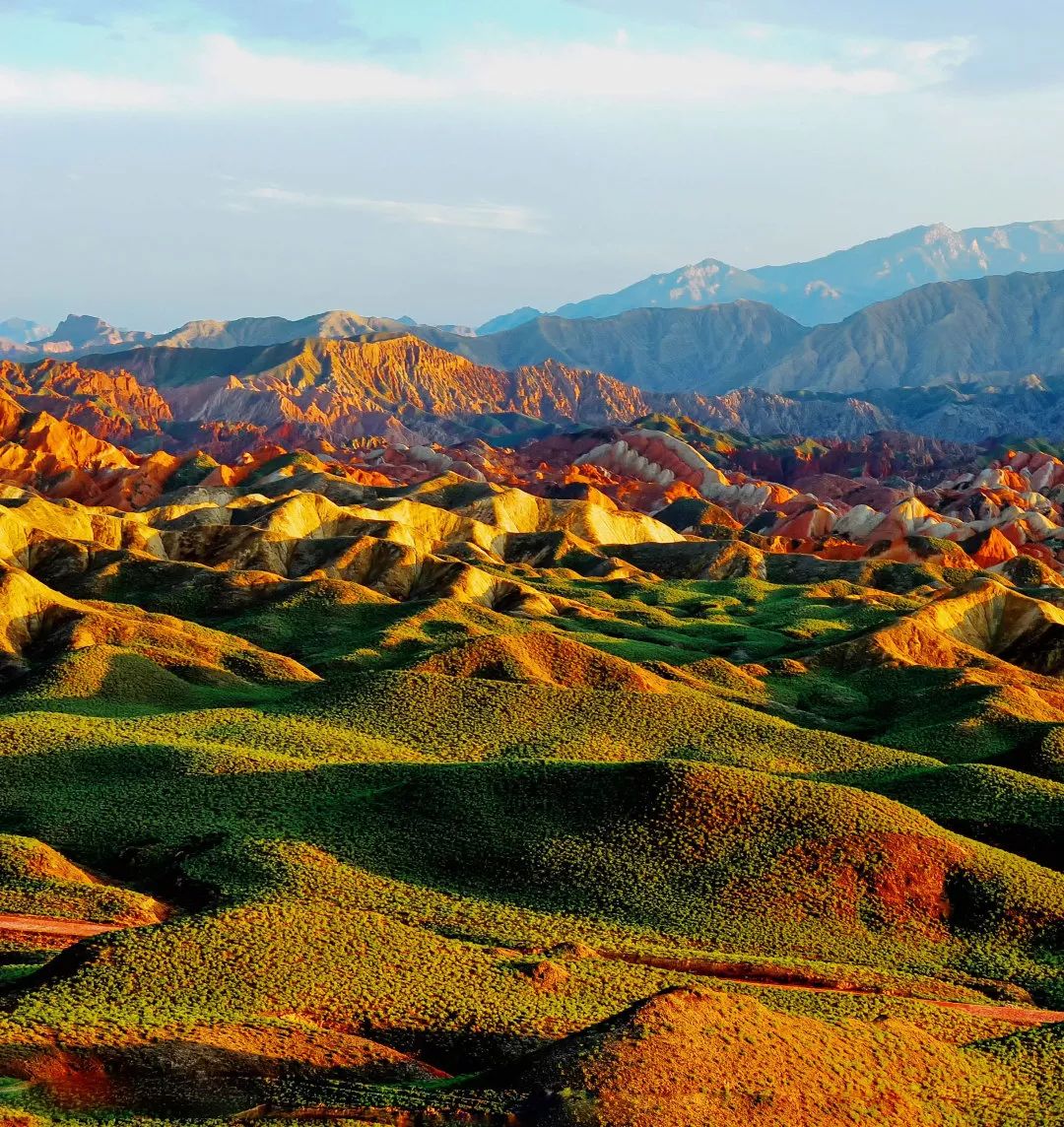


动 Press and hold the picture to slide left and right to view ☜
Colorful Danxia.
Photography/Ma Hongwei
However, in 2010, the "most beautiful Danxia" failed to form a team with the Danxia landform in the south, and missed the opportunity to become a world natural heritage. Although this is not damaged by the beauty of Zhangye Danxia, it is inevitable that it is uneven.
What is richer than Danxia's color is the natural landscape of Zhangye. Here, you can see almost all natural landscape except the ocean.
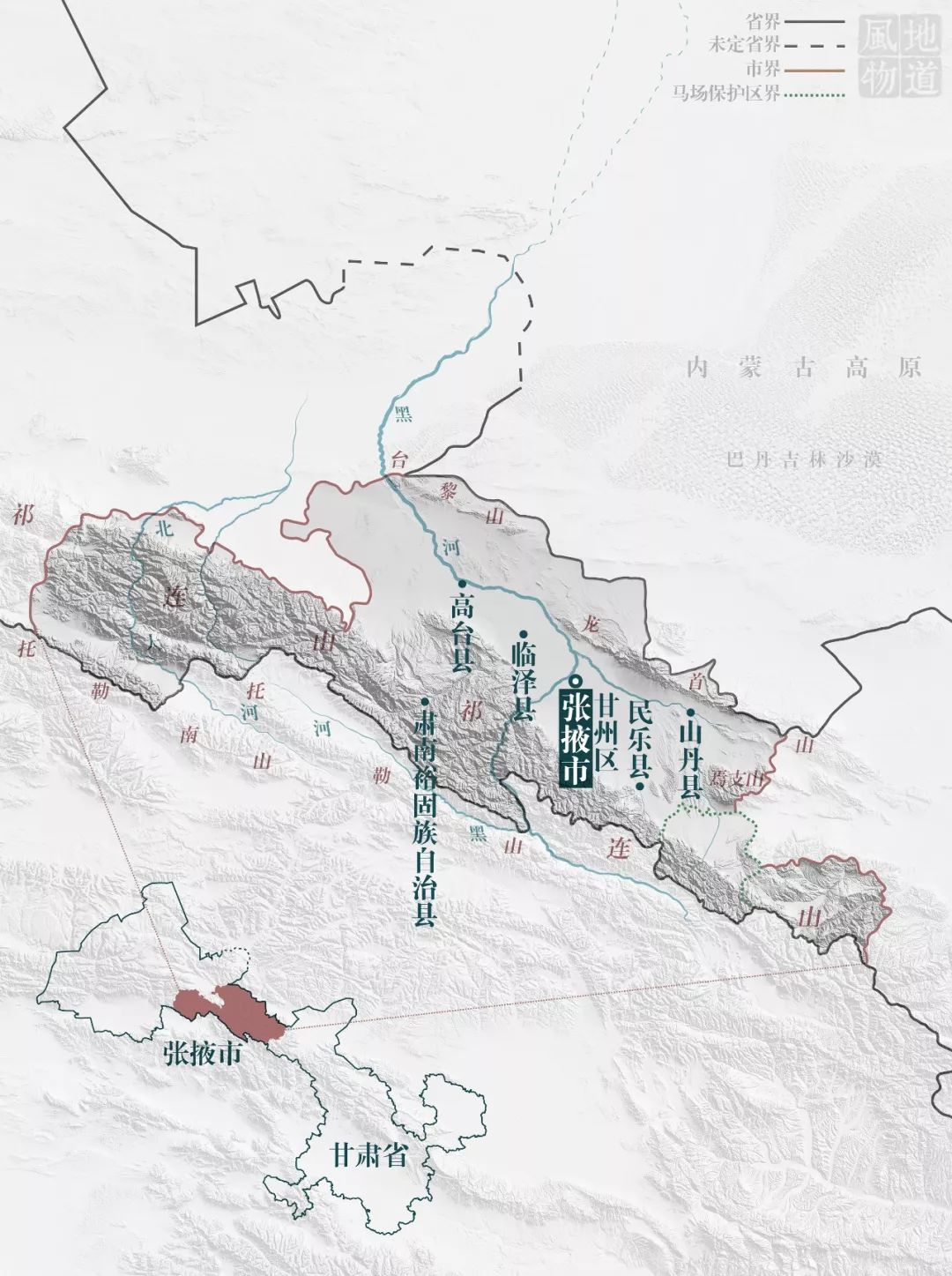
Zhangye topographic map.
Drawing/Paprika
Today's jurisdiction is narrow and long. The vast Gobi Desert in the north, the tall Qilian Mountain in the south. Qilian Mountain is one of the most important mountains in the Northwest. The natural belt of vertical distribution on the mountain adds diversity to Zhangye.
The water sources of high mountain forests have made the drought northwest have the basic conditions of life reproduction. Between Qi Lian and Xunzhi, there is a vast grassland. The aquatic grass is rich and beautiful. It is a grazing land with excellent conditions. It has also become an important horse -raising base for all parties.
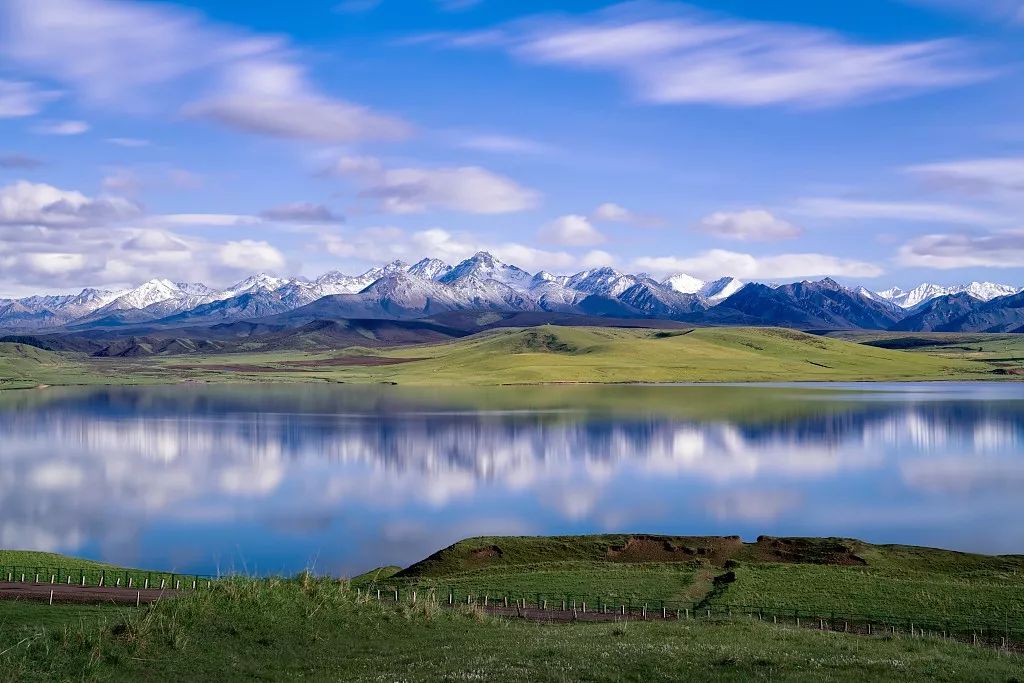
Shan Dan Lao Bird Lake (Shandan Military Racecourse).
Photo/Visual China
There is a way to "lose my Qilian Mountain and make me six beasts." Qilian Mountain is a must -have strategic place for various regimes in the cold weapon era. The Central Plains dynasty, which was originally lacking in the horse. In the extremely heyday of the Tang Dynasty, the military and horses breeding on the Massaca Camp can reach 70,000. It is now known as the Yaman Dan Army Farm, which is the second big racecourse in the world. It still provides the country's most robust horse.
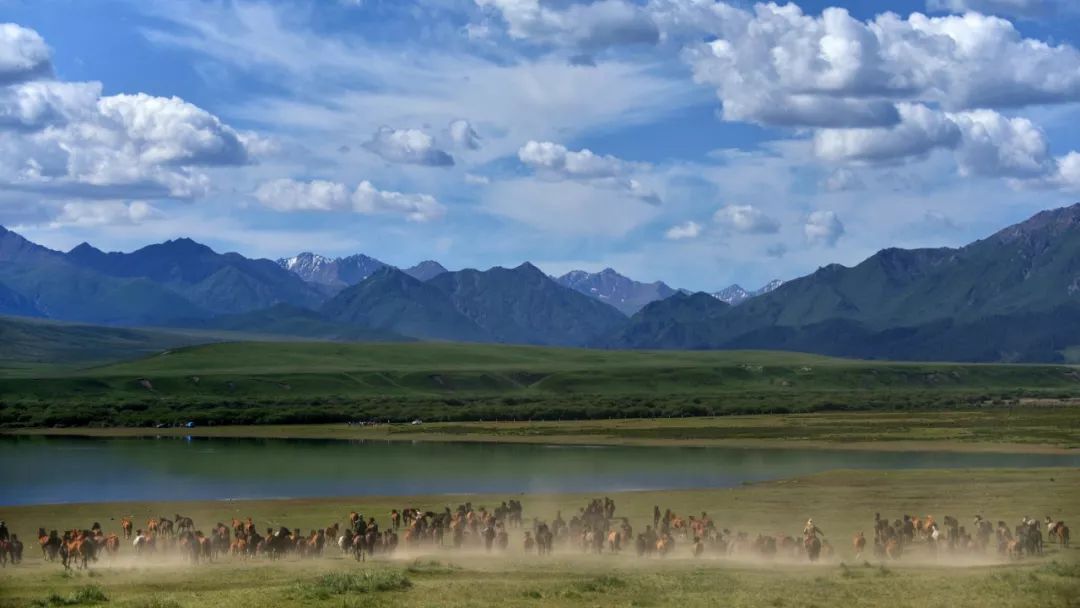

Shandan Army Racecourse.
Photography/Wang Guangyin
Because of the excellent natural conditions, the nomadic people set foot in the Zhangye area very early, and the pastoral horses let go of sheep, leaving deep nomadic marks. However, this is not Zhangye's only talent.
"Han Book" contains: "The Huns Hu Tian is Qilian." For the residents of Zhangye, and even the entire Hexi region, it depends on the "water of the sky".

Qilian Mountain Ranch (Qilian Mountains South Poor).
Photography/Ma Hongwei
Qilian Mountain has a huge glacier resource. The melting of ice and snow gathered into a river, creating possibilities for agriculture and living. The July 1 Glacier in the Qifeng Tibetan Township in Sunan County is also the closest ornamental glacier from Asia to the city.
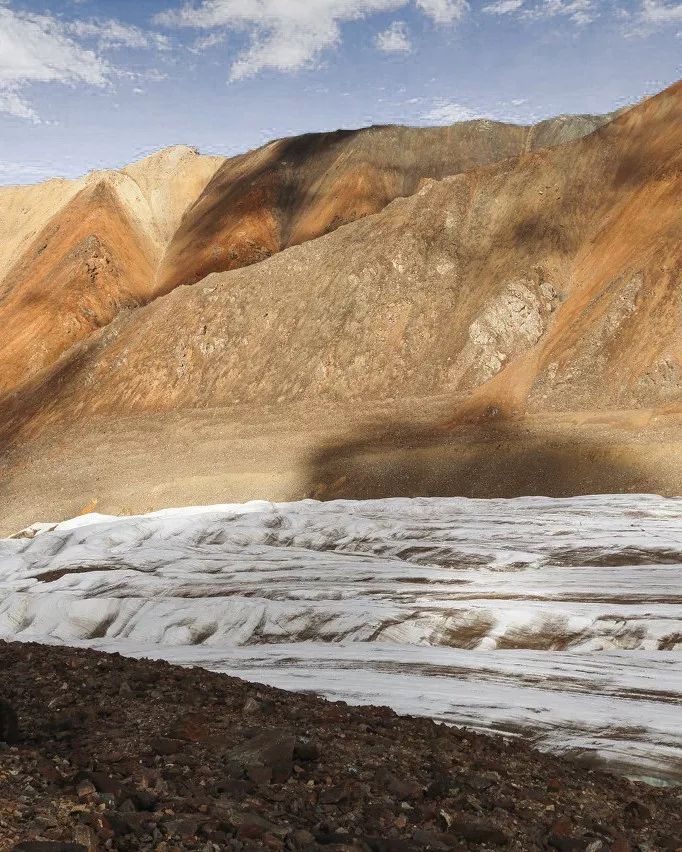
Seven Day Glacier.
Figure/Figure Worm · Creative
The Hei River originated in Qilian Mountain. It is the largest river in Zhangye and the mother river of Zhangye. The oasis and plains along the river have laid the foundation for agricultural development and made Zhangye as a city as a city. The encounters of farming and nomadic civilizations are destined to have an extraordinary actions.
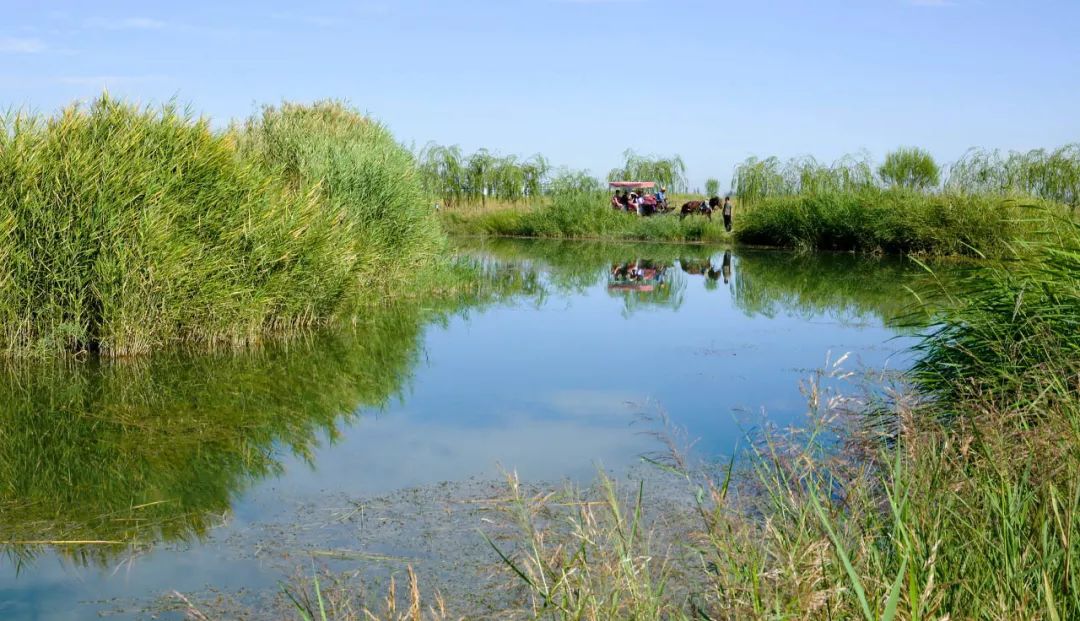
Zhangye Heihe National Wetland Reserve, Zhangye.
Figure/Figure Worm · Creative

Zhang Guo arm, Zhangye's name and mission
"I hope that the top of the Qilian Mountain is snowing, and I mistakenly take Ganzhou as Jiangnan." Luo Jialun, who was the president of Tsinghua University, left such a poem when he came to Zhangye. In Gansu, the people also spread the saying of "Jin Zhangye, Yinwuwei".
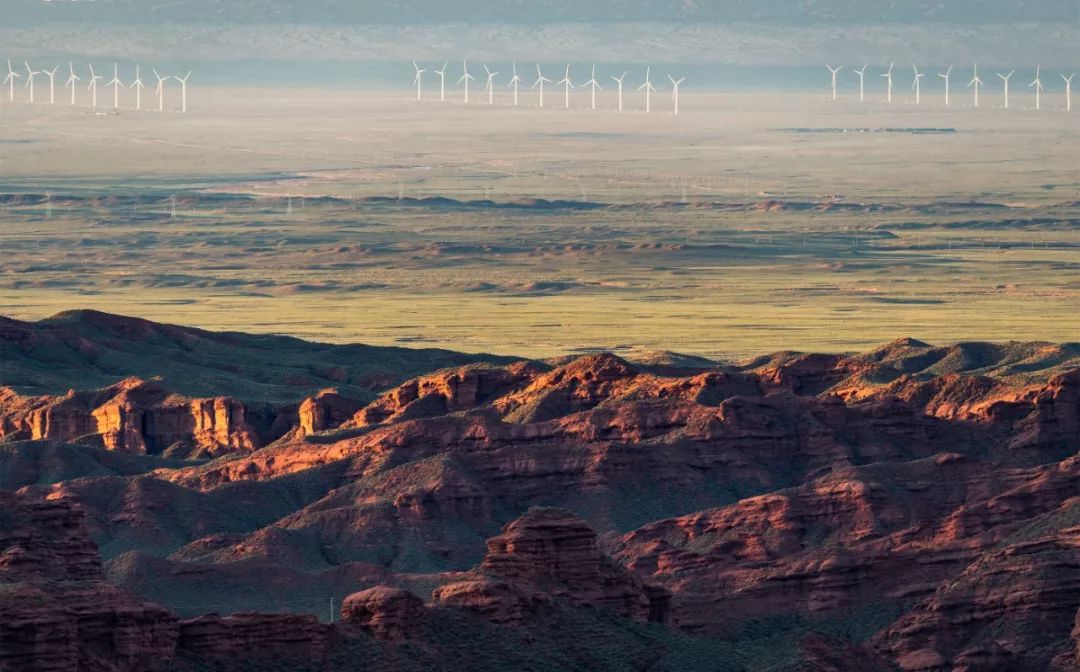
Pingshan Lake Grand Canyon landform.
Photography/Wang Guangyin
Zhangye's soil is not as fertile as the northeast black soil, and the climate is not as moist and gentle as the Jiangnan water village. Agricultural activities are subject to the scientific and technological limitations of natural conditions and traditional agricultural society, and the scale has been limited. However, developed agricultural civilizations are still developed here.
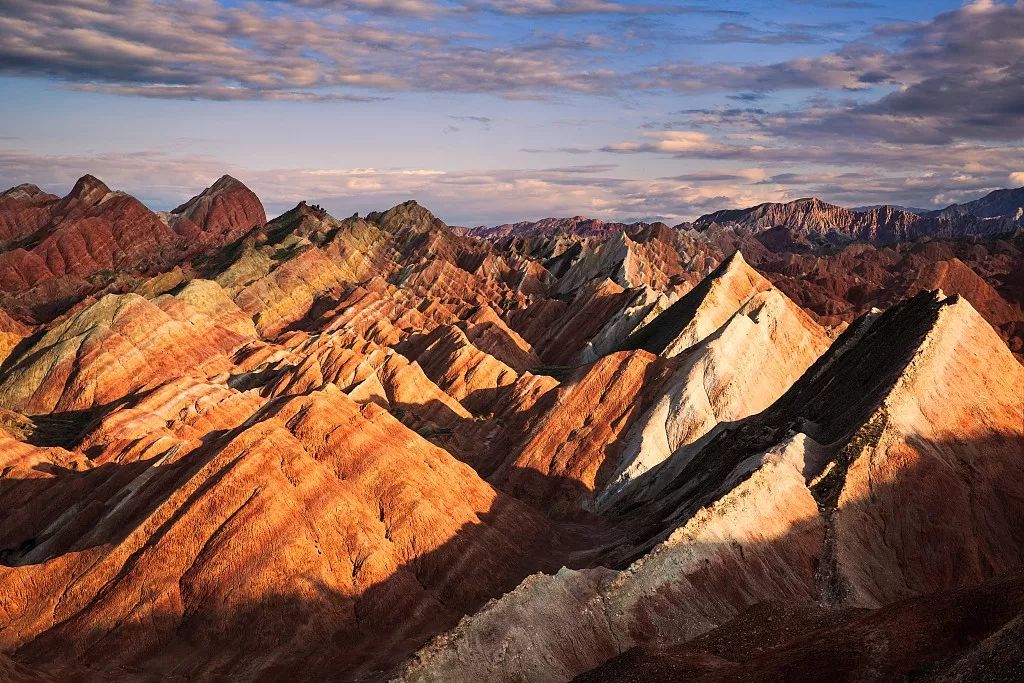
In Zhangye National Geological Park in Gansu, the shape of the landform is smooth and does not lack edges, and the gentleness contains majestic power.
Photo/Visual China
In addition, Zhangye, of course, has a typical border in the northwest. When Chen Ziang came to Hexi, he left a poem: "Gorge Damn, the south of the gorge, China, and the horizontal boundary." Xiakou (also known as Kazukou), in the territory of the villagers in the villages of Shandan County. The Gorge is locked in Hexi's main roads. The residents of all ages are garrisons and their families. Even the name of the fellow villagers has a sense of generosity for the country's loyalty.
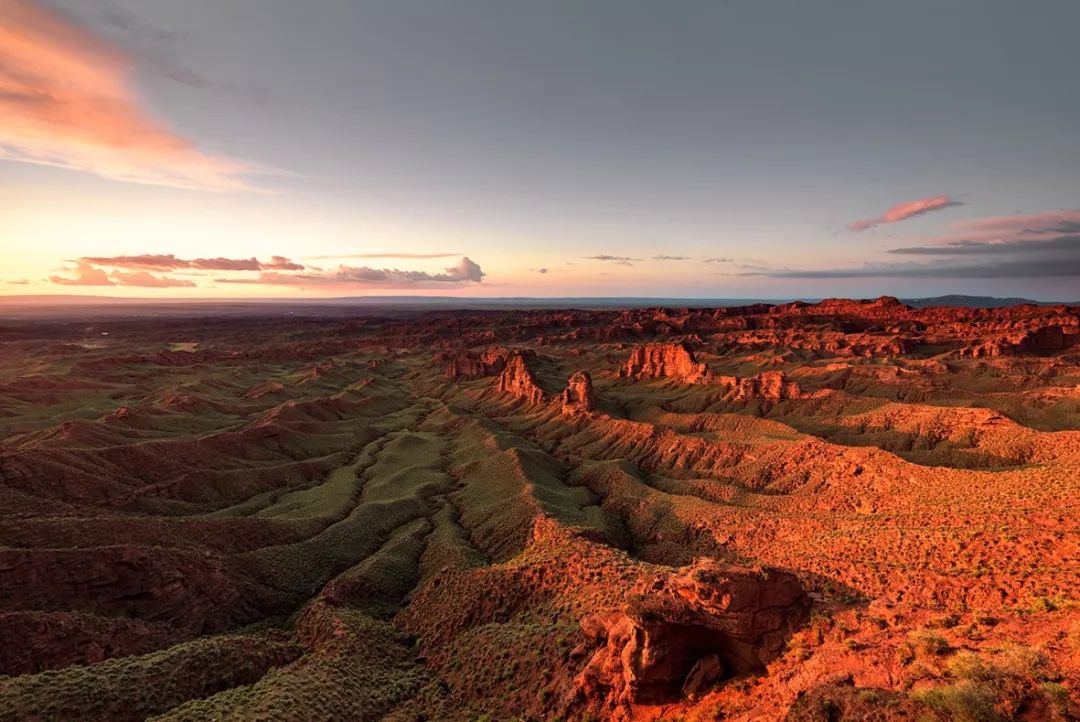
The red dust is rolling and the time is gone.
Photography/Wang Guangyin
Chen Ziang was born in the Tang Dynasty. When he saw the gorge mouth, he was fierce, and when Lin Zexu returned from Xinjiang to pass through here, the Qing Dynasty was declining and twilight. There was no powerful and powerful soldier at that time. Walking in Zhangye can feel the same scenery everywhere, and the scenery everywhere is different.
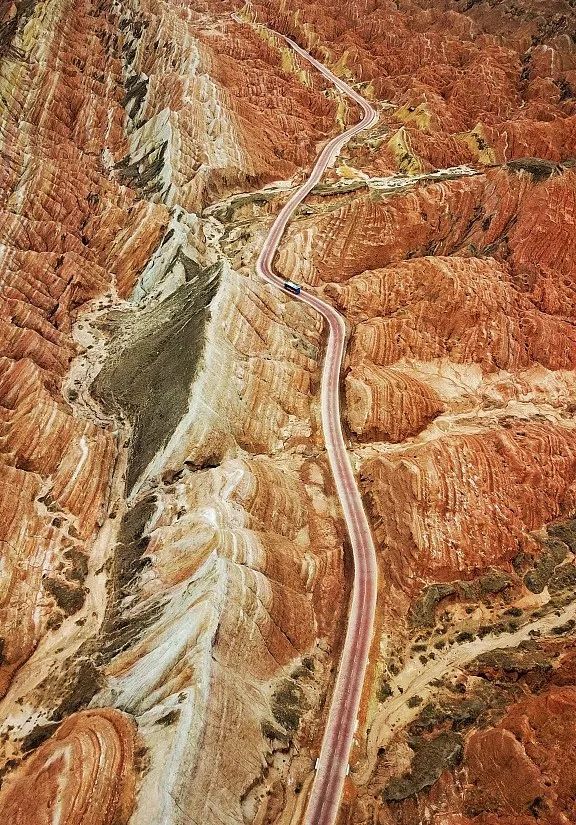
Photo/Visual China
What decided Zhangye's fate was one of the most winning emperors in Chinese history -Emperor Hanwu. In 111 BC, Emperor Wu of the Han Dynasty, Emperor Wu of the Han Dynasty, ordered the analysis of Jiuquan County and set up Zhangye County. It can be seen that when Zhang Ye was born, he shouldered the heavy responsibility and was highly hoped.
At that time, the contradiction between the Han Dynasty and the Huns was quite deep. Relying on the policies of the two generations of father and ancestors and the people, when Emperor Hanwu had the throne, he had a good situation and strong national strength. Therefore, he hoped that he could make a difference in the northwest and solve the sidelines. Faced with the strong and strong Huns, one of the countermeasures of the Han army was to capture the connection between the Huns and the Dai people in the Qinghai -Tibet region, and at the same time opened the Western Regions, which facilitates the same opposition to the western regions of the Xiongnu.
Bian Dukou.
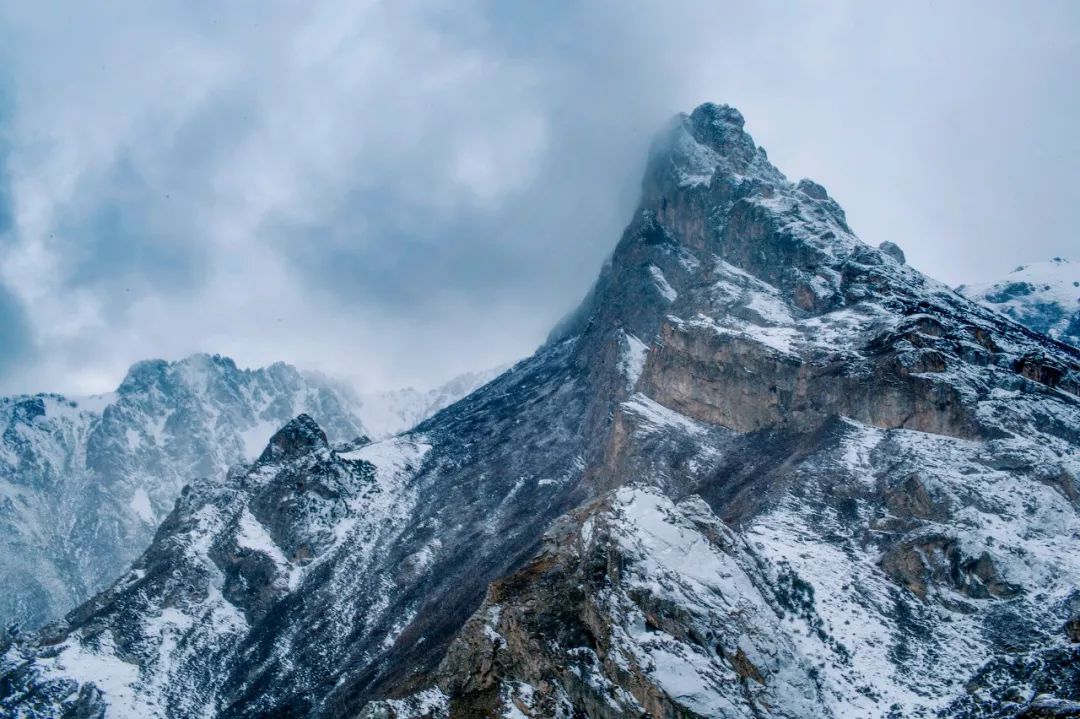
Figure/Figure Worm · Creative
The importance of Zhangye in the Han -Hungarian War lies in geographical location. There is a mountain mouth in the middle of Qilian Mountain, called Biandu, and more than 3,500 meters above sea level. And Zhangye is just north of Biandu, and it can cut off the connection between the Huns and Qiang. From the perspective of east to west, Zhangye is also a must -have place to come out of Yangguan and Yumenuan. In any case, the Han Dynasty army must occupy the Zhangye area.
Emperor Hanwu took Huo Qubing as a general, led the army to enter the Hexi Corridor, launching two battles in Hexi, and severely damaged the Xiongnu army. The Xiongnu returned to Mobei. The establishment of the "Four County of Hexi" in the Han Dynasty has only mastered the strategic initiative, and Hexi has also begun to transform from nomads to the farming area.
Zhangnan Kangle Grassland, Zhangye City.
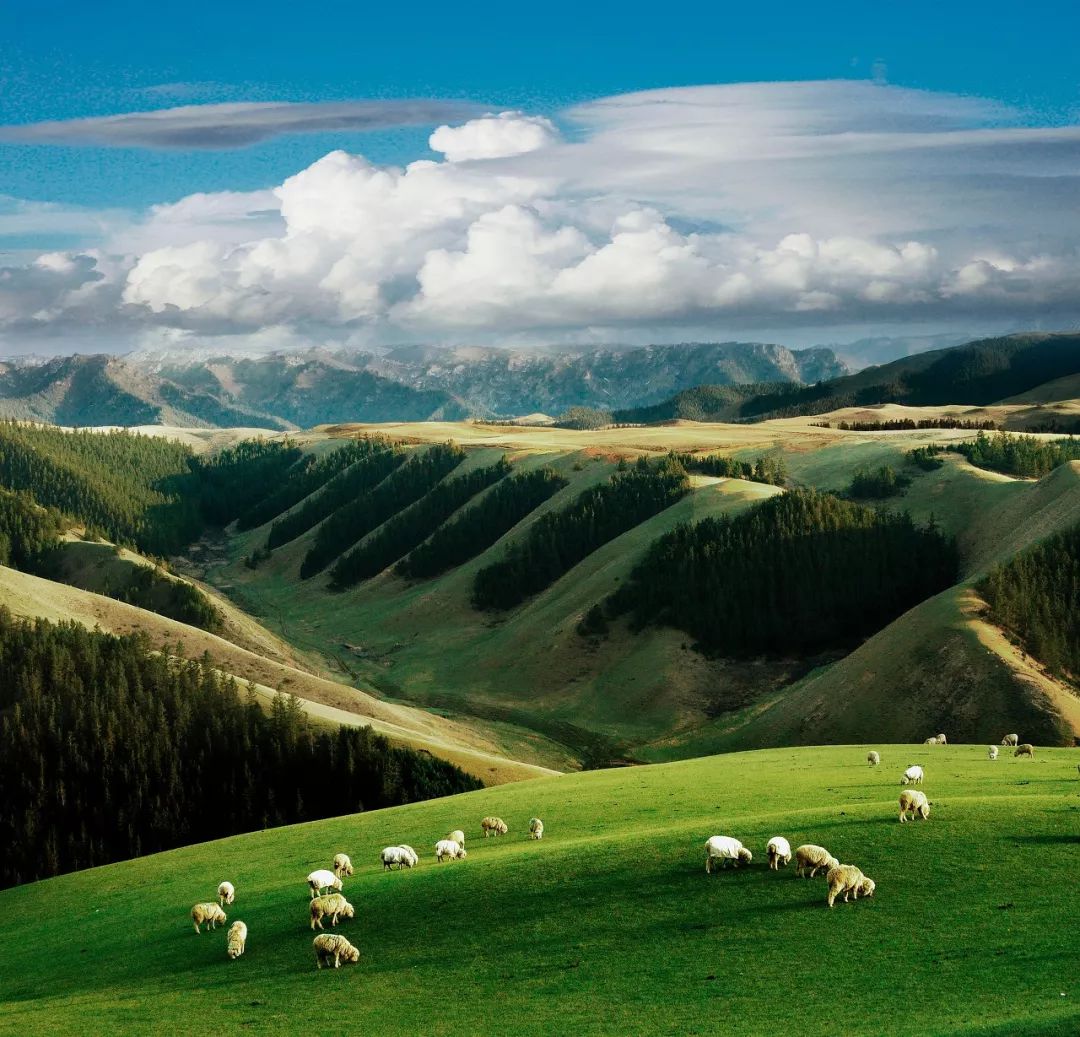
Figure/Figure Worm · Creative
The conflict between farming civilization and nomadic civilization has almost run through the entire ancient Chinese history. The Chinese nation has never been a fighting nation. Even the "Sun Tzu's Art of War" said "good warriors and soldiers who are not fighting." Emperor Hanwu's poor soldiers, instead of expanding, is better to attack, take the initiative to attack, hurt the Huns, and then obtain a peaceful environment. Including Zhangye's four counties in Hexi, it is the direct product of this strategy.
The full picture of the Western Han Dynasty.
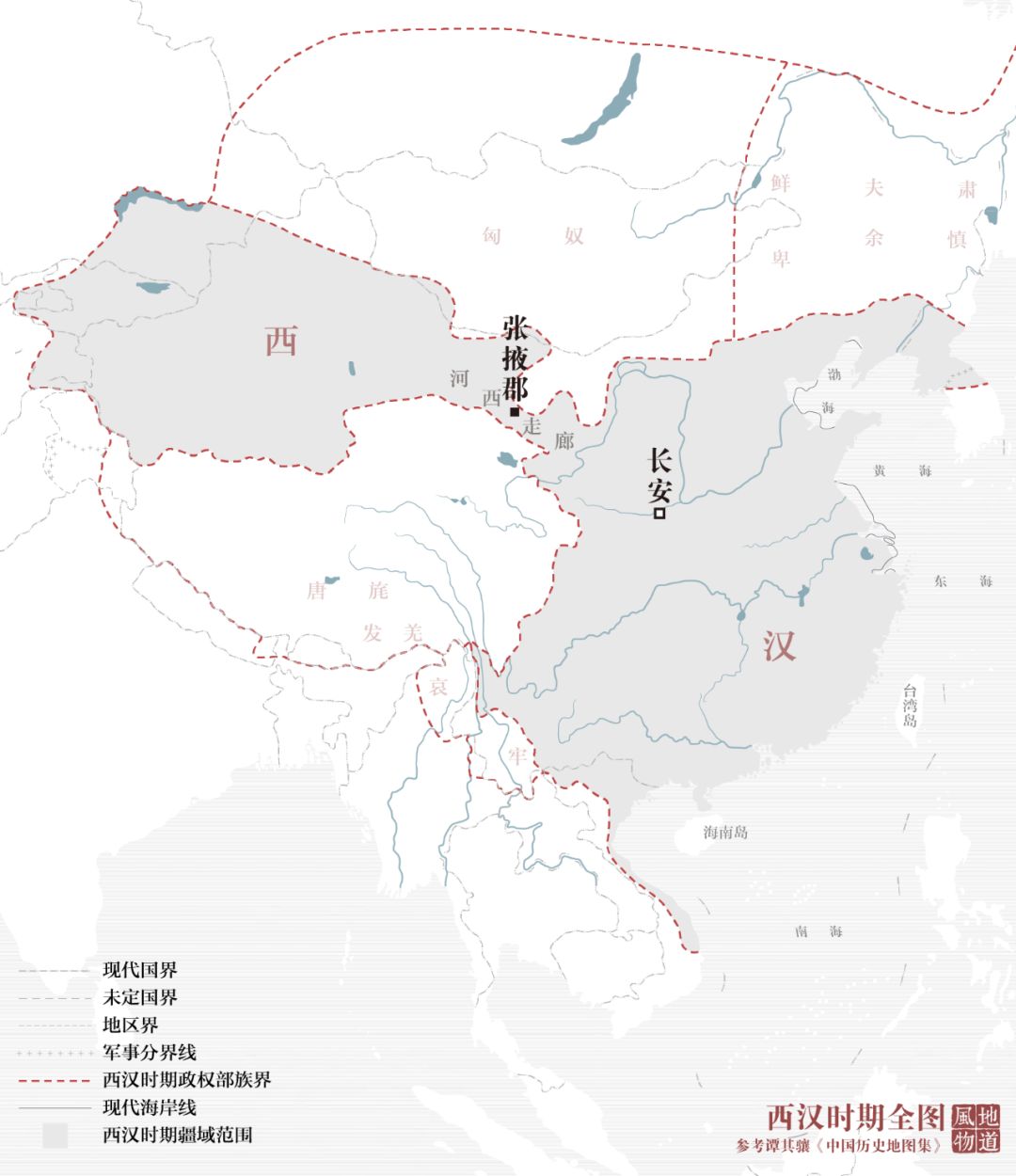
Drawing/Paprika
The territory of the Western Han Dynasty looks like a huge dumbbell, which makes this "dumbbell" not break the narrow Hexi Corridor. The development of the Silk Road in the future is also based on a stable Hexi Corridor.
Gan of Gansu

There are many ancient cities in Zhangye.
Camel City site.

Photography/Li Wenbo
Driving in the Zhangye area, you will always meet a brilliant earth wall. They may have been Hexi's heavy town, and the soldiers must compete, but now there is only a residual body. The drought in the northwest has preserved these ancient cities, so that we have the vicissitudes of history. But in the eyes of Zhangye's residents, the broken wall is the trace of their ancestors' hard struggle for survival.
Zhangye Yadan landform.
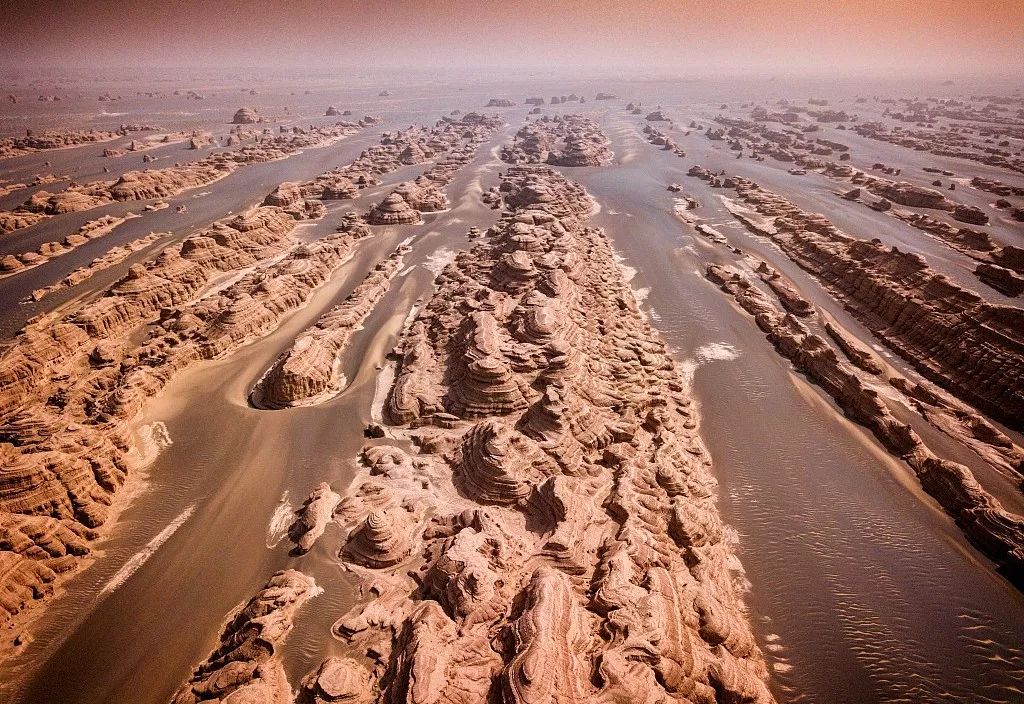
Photo/Visual China
Time came to the two and south dynasties, from the Xiongnu branch of Lu Shuhu, Jutou Mengxun, established Beiliang in Hexi, and was designated in Zhangye. Although Jumou Mengxun is the Huns, the Beiliang regime accepts Han culture, focusing on agriculture, and at the same time, it is unprecedentedly prosperous in Buddhism.
During the Western Wei Dynasty, Zhangye changed to Ganzhou, weakened the sense of mission given by the original name, but instead had a trace of stability of the soil and water. This beautiful meaning cannot stop the law of the city's change of king's banner. The dynasties have valued Hexi's strategic position, and they did not dare to neglect.
Wanshou Temple Wooden Tower.
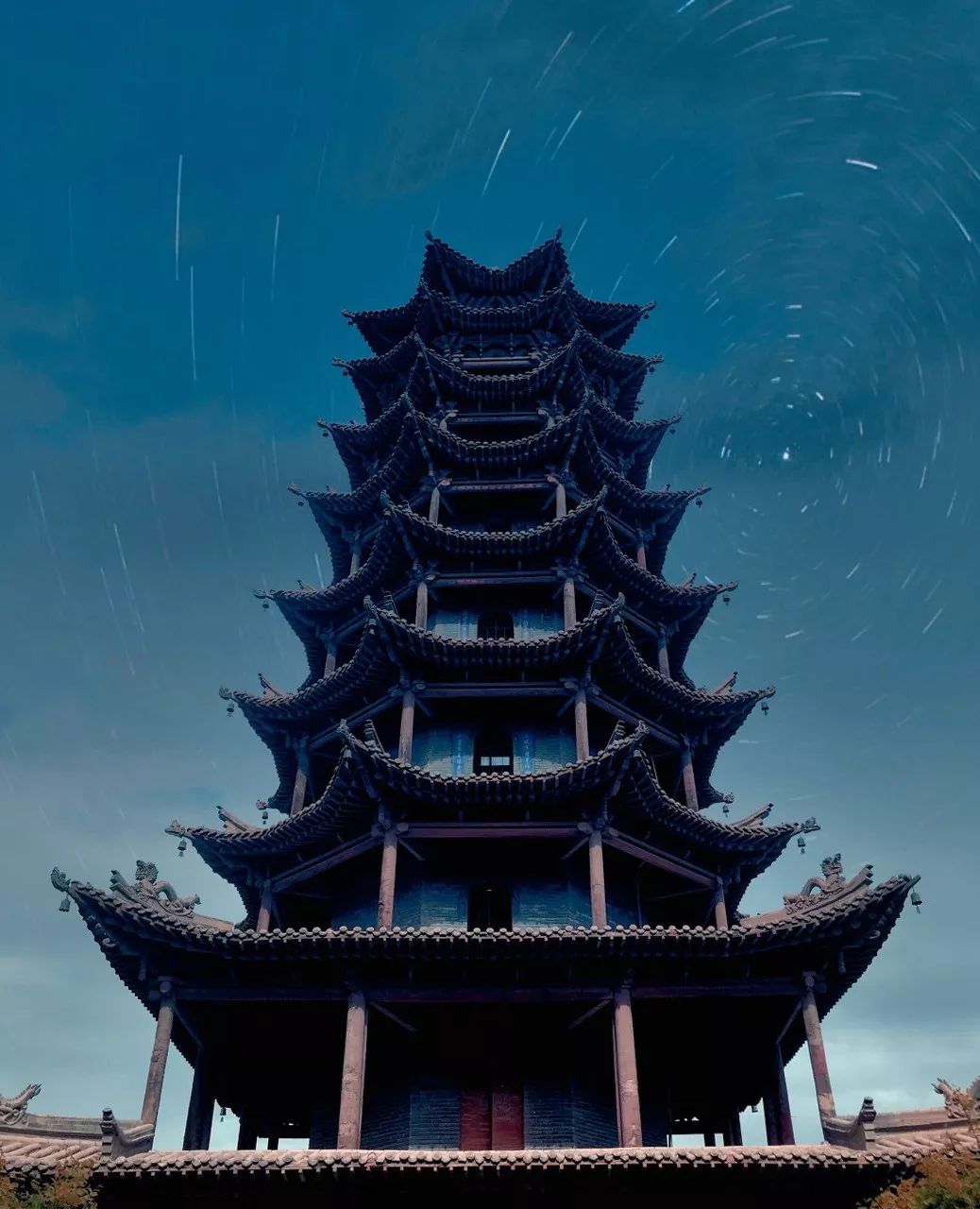
Figure/Figure Worm · Creative
Emperor Sui Yang once patrolled Hexi, and Zhangye was the most important stop in this trip. The king who has always been driven by passion is about to come to the mountains, and meet with the envoys of the 27 countries in the Western Regions. History records recorded the grand occasion at the time "riding and taking the swallow, dozens of miles of Zhou, to show the victory of China."
Horseshoe Temple.
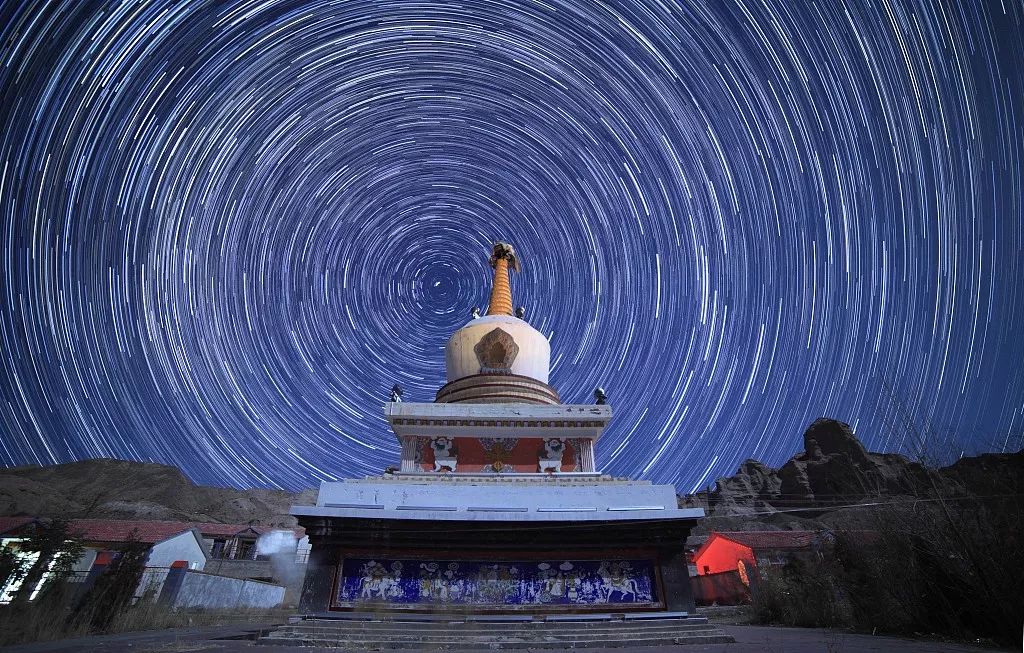
Photo/Visual China
After the Tang Dynasty poet Chen Ziang inspected Hexi, he gave the court to Chen Hexi's importance to the stability of the border, and deliberately put forward the significance of Ganzhou's food to Hexi's danger, thinking that "the life of Hexi is now hanging in Ganzhou." At the end of the Tang Dynasty, the Tang Dynasty stretched out, and the central government quickly lost its control over Hexi. Returning to the rise and occupying Gansu, their descendants are the Yugu people who live in Gansu.
Zhangye's status reached a new height in the Yuan Dynasty. The Yuan Dynasty created the provincial province system, named the newly established provinces in the northwest of Gansu and Suzhou (now Gansu Jiuquan), and only the sources of the name of Gansu Province today. Ganzhou was the provincial capital of Gansu at that time.
Zhangye Mountain Danxi Dahe.

Photography/Guo Guangxing
War is always the most obvious words in Zhangye's resume. The Qing Dynasty used the northwest of the Qing Dynasty, with Ganzhou as an important supply base. During the War of Liberation, the First Field Army of the Chinese People's Liberation Army entered Gansu from Qinghai, and broke through the Biandu mouth to occupy Zhangye, which then liberated Gansu and Xinjiang.
Challenges a huge natural environment than politics and military impact. The Zhangye people have been struggling in the yellow sand and oasis.
Pingshan Lake under the starry sky.

Photography/Dai Jianfeng Jeff
The ancient cities of the Han and Tang dynasties were mostly set up in the downstream of the river, and later generations lived in the river. This caused insufficient downstream water, and the city was quickly abandoned. Human retreat, yellow sand attack, and the desolate scene brought by desertification seems to be the most in line with people's impression of the northwest of the "desert is lonely and straight, long river and sun is full." The Black Water State site in Ganzhou District, Zhangye City is one of the victims of the "serial killer" killed by Huangsha. History books record that this is the place where the old Ganzhou is, and after the evacuation of the Sui Dynasty army at that time, the ancient city turned out to be "covering the wind and sand overnight." See the power of wind and sand in the northwest. The ruins of the Heishui country are also seen everywhere in the site.
Photography/Zhou Zhaohui
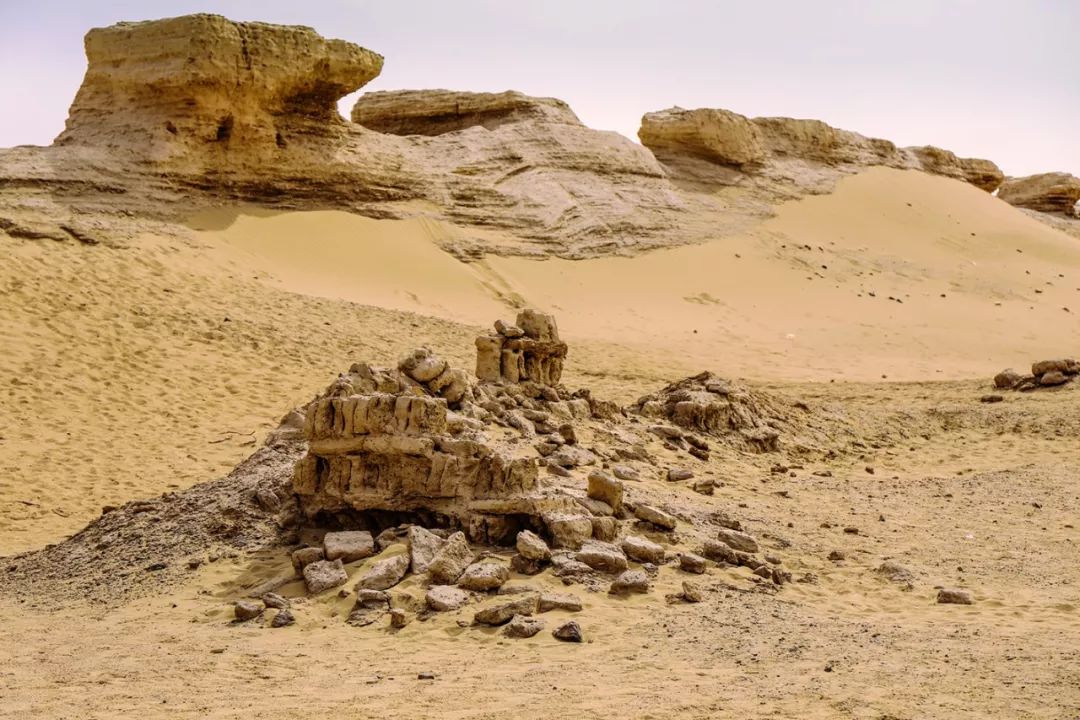
Zhangye, the arms that have never closed
Whether it is war or wind sand, she can delay Zhangye's progress, but she cannot stop her.

Zhangye's most unique is geographical location. Once the war disappears, Zhangye quickly turns into a heavy town on the Silk Road. Food, silk, jade, melon, fruits, porcelain continued to transport along the Silk Road. To this day, Zhangye is still a must -have place to transport roads and railway traffic to Xinjiang and further Central Asia.
Zhangye's cargo oil tanker.
Photo/Visual China

Zhangye's landmark Bell and Drum Tower is hanging on the four sides of the Bell and Drum Tower, each hanging plaque, namely East: Jincheng Chunyu; West: Yu Guan Xiaoyue; South: Qilian Qingxue; North: Juyangupu. The very different scenery of the Quartet makes Zhangye a hotbed of communication and integration. Zhang Jian, Xuanzang, Marco Polo and other iconic characters in the history of Chinese and foreign exchanges have all arrived in Zhangye.
The main Buddha of the main hall of Zhangye Great Buddha Temple.
Photography/Wang Huan

The traces of fusion are also reflected in all aspects of Zhangye's life. It has been one of the Buddhist centers in the northwest since ancient times. The group of Horseshoe Temple Grottoes began to be jealous of the Sixteen Kingdoms of the Wuhu.
Horseshoe Temple Grottoes.
Photography/Lu Wen

Zhangye people have a comfortable contentment of farming people, as well as the boldness of the horse back people. They love to eat mutton, and they are also fate. The dining table of Zhangye is the product of farming and nomadic communication. What's more, wheat is also a foreign crop passed from the Western Regions.
"Golden Zhangye".
Photo/Visual China
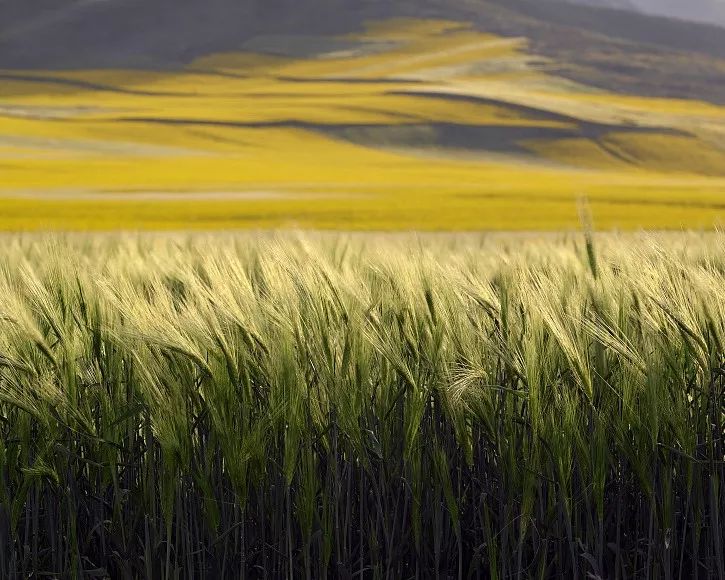
Zhang Ye has continued to change in openness and integration, and it has become what it looks like today. This is a small city, with a major mission that has been in danger, and has experienced backward situations. Today, this ancient city is still "Zhang Guo's arms", but it is not to stop, but to open.
Overlooking the Bell and Drum Tower.
Photo/Visual China
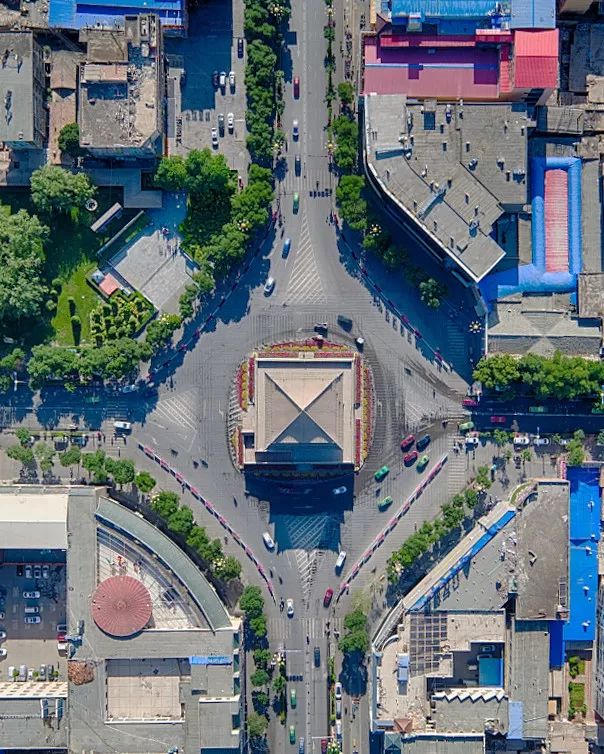
Text 丨 Eiten
Image editor 丨 Yuan Millennium

Map Editor 丨 Paprika
Design 丨 Q Years
Bleak
Reference
Xiao Chunlei "Huaxia Border City"
(Day) Chen Junmou translated "Hexi History Geography Research"
This article is the original content of authentic style




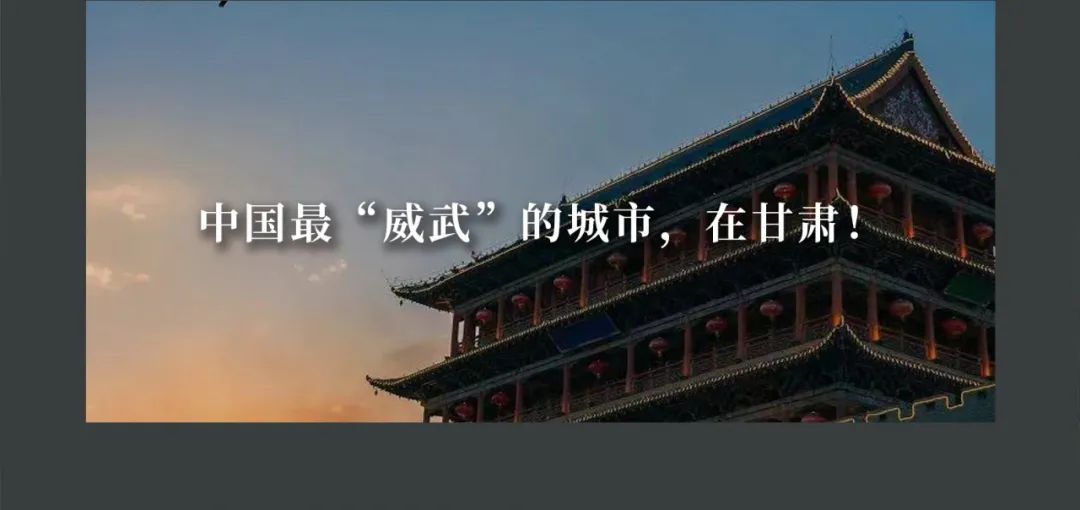
- END -
Open in late August!The third batch of bus subway is coming →
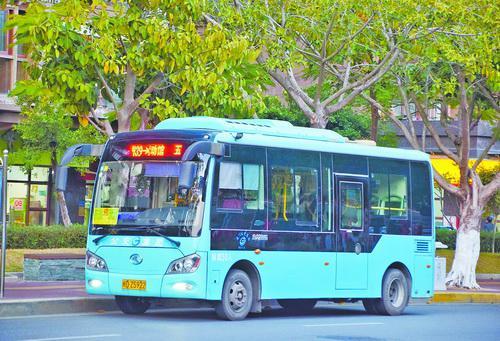
The second batch of interoperability M17.In order to further improve the convenien...
Heilongjiang's latest epidemic notice
At 0-24:00 on June 17, 2022, there were no new local new crown pneumonia epidemic information reports in Heilongjiang Province, and 1 new overseas input diagnosis case (Harbin City Report, South Korea